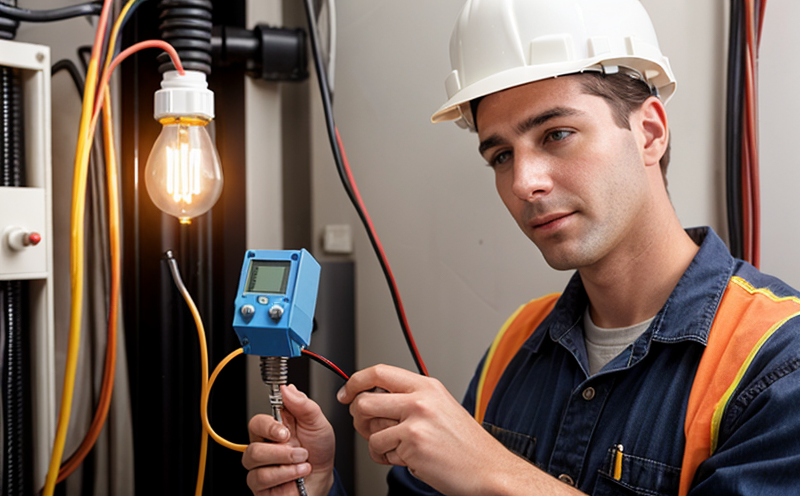Short circuit protection inspection
The short circuit protection inspection is a critical component of ensuring electrical and electronic systems operate safely and efficiently. In sectors such as manufacturing, construction, and infrastructure where electrical installations are integral to daily operations, the risk of short circuits can lead to severe damage, fires, and even casualties. This inspection ensures that protective devices—such as fuses, circuit breakers, and ground fault interrupters—are functioning correctly.
The primary purpose of this inspection is to evaluate whether protective devices are responsive within their design limits. These tests typically involve applying a known current or voltage to the system under controlled conditions to simulate potential short circuits. The response time and trip characteristics of the protective device must meet specified criteria, which can be found in standards like IEC 61482-1 for industrial installations.
The inspection process involves several key steps. First, the electrical system is thoroughly documented to understand its configuration and load requirements. Then, protective devices are tested individually or as part of a circuit. This includes checking that the device opens before reaching dangerous fault levels and operates correctly within expected timeframes. Additionally, tests can involve verifying that there’s no arcing or overheating during the test.
Once testing is complete, detailed reports are generated for each protective device inspected. These reports include data on performance parameters such as trip current, operating time, and maximum interrupting capacity. Compliance with international standards like IEC 60269-11 ensures that the inspection process adheres to best practices.
For quality managers and compliance officers, regular inspections are essential for maintaining regulatory adherence and ensuring safety. R&D engineers can benefit from this service by validating new designs or modifications to existing systems. Procurement teams may also find it useful when specifying components that meet stringent safety standards.
Eurolab Advantages
At Eurolab, we offer comprehensive short circuit protection inspections tailored to your specific needs and industry requirements. Our team of experienced engineers is fully equipped with the latest test equipment to ensure accurate results. Here are some reasons why choosing us for this service can benefit you:
State-of-the-art testing facilities that comply with international standards.
Experienced and certified technicians who understand local regulations.
Detailed reports that provide actionable insights into system performance.
Fast turnaround times to minimize disruption to your operations.
Comprehensive training programs for your staff on best practices in electrical safety.
We prioritize customer satisfaction and are committed to helping you maintain a safe working environment. With Eurolab, you can rest assured that your systems meet the highest safety standards.
Why Choose This Test
To prevent potential fires caused by electrical faults.
To ensure compliance with international and local regulations.
To protect expensive equipment from damage due to overcurrent conditions.
To safeguard personnel against electric shock hazards.
To validate the reliability of protective devices in real-world scenarios.
Regular short circuit protection inspections are crucial for maintaining safe and efficient electrical systems. By choosing this service, you can ensure that your installations meet all necessary safety requirements and operate smoothly without disruptions.
Environmental and Sustainability Contributions
The importance of environmental sustainability cannot be overstated, especially in the context of electrical and electronic systems where energy efficiency plays a significant role. Short circuit protection inspections contribute to this goal by ensuring that protective devices function optimally, thereby reducing unnecessary power consumption. This leads to lower operational costs and less strain on local grids.
Furthermore, by preventing fires and equipment failures, these inspections help reduce waste associated with downtime and replacement of damaged components. The use of efficient protective devices also supports the transition towards greener technologies, as it minimizes resource depletion and reduces emissions from manufacturing processes. In summary, a well-maintained electrical system contributes positively to environmental sustainability.





